Creating a Back Yard Native Meadow
by Christa Orum-Keller
April 2024
While it seems that we have been planting native plants in ornamental ways for decades already, there are still many, for whom the practice is new, particularly in the context of landscape installation in residential backyards. That’s our focus with this message.
Clients may ask for “native plants” or pollinators. They might even ask for prairie plants, but I’m guessing few ask for a Meadow, but I suggest Meadow is a positive and relatable word to use with homeowner clients, and we can adjust it to Native Meadow.
Meadow refers to a grassland where flowers are dominant, the space is usually smaller as compared to a prairie and trees may surround the edges. It tends too, to be a more European utilized descriptor. Prairie on the other hand refers to a specific ecology occurring in the Great Plains, more often dominated by grass species and more vast in size. Homeowners may have a difficult time imagining having a Prairie in their backyard, but a Native Meadow might seem manageable, invigorating and beautiful!
Doug Tallamy encourages us to join in the movement to create a Homegrown National Park where we create ecosystem networks throughout suburbia that become a foundational web of native habitat to sustain our indigenous pollinators. It’s a great challenge, and clients can join the movement, creating Native Meadows in their own yards, and logging their accomplishment on the Homegrown National Park map!
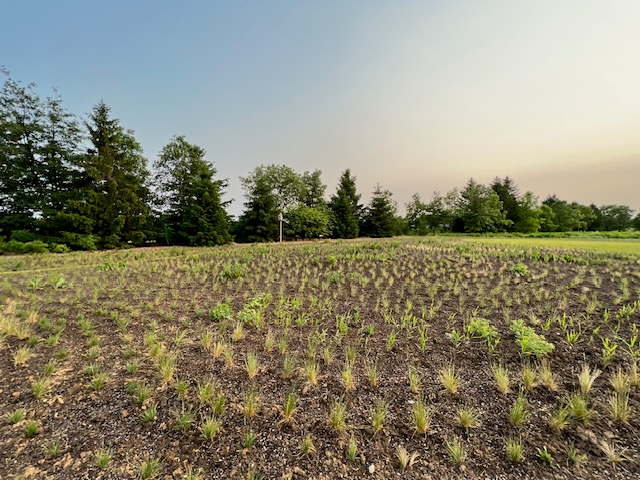
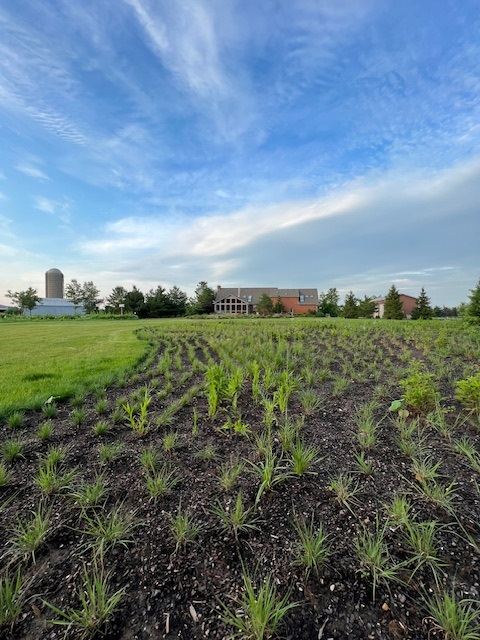
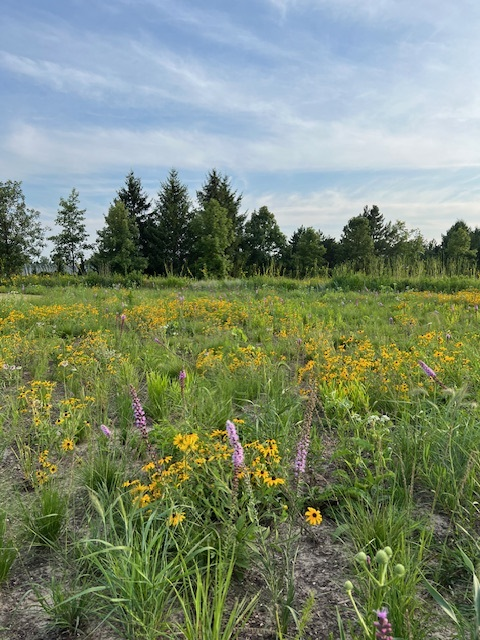
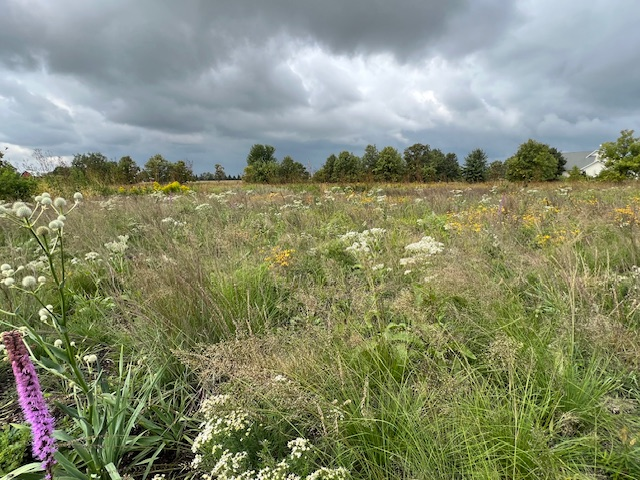
The scale of the planting in these photos is much larger than what is recommended in this article, but it does shows successful sequencing through a season from planting roughly 12” on center.
Too often native plantings begin with too much enthusiasm, without knowing the rigors of stewarding the planting successfully. It saddens me when I see an energetic installation of a scale that gets away from the garden stewards and is then returned to exotics or worse yet, turf, just a couple years after its installation.
For that reason, encourage and support your clients in starting small and keeping it simple and manageable – whether they do the maintenance themselves or you provide that service. Plants can always be added and beds can always be expanded. It is far better to have an outstanding, modest sized, foundational success, as opposed to an aggressive plan that fails in the long run, often due to scale.
Simple tips for a successful Native Meadow planting:
- Start small – think 10 x 10’
- Keep the plant list simple to start with; you or the client can add more species later.
- Consider using shorter native plants in smaller settings.
- Follow this bed preparation regime:
- Kill turf and/or weeds. Suppress weeds completely!
- Utilize a robust layer of Midwest Trading’s One Step soil amendment & conditioner; it can be placed directly on top of dead turf to avoid having to remove sod; this no till process also eliminates bringing weed seed to the surface and helps with your long term maintenance
- Plant tightly for single season coverage, to minimize weeding, and for an impressive aesthetic impact in just one season!
- Weed out non-natives assertively in the first season, particularly in the first 2-4 months
Imagine a modest sunny bed of 10 x 10 feet (100 square feet). Plant one plant per square foot for quick one season coverage and minimal weed management; plant 10 of each plant listed below using the robust but not too large pint sized Natural Garden Natives containers. This plant list gives variation of height, color and seasonal interest and features 70% flowering native plants to 30% grasses. More flowers = Native Meadow
| Latin Name | Common Name |
| Allium cernuum | Nodding Wild Onion |
| Bouteloua curtipendula | Side-Oats Grama |
| Dalea purpurea | Purple Prairie Clover |
| Echinacea pallida | Pale Purple Coneflower |
| Liatris aspera | Rough Blazing Star |
| Penstemon hirsutus | Hairy Beardtongue |
| Rudbeckia fulgida | Black Eyed Susan |
| Schizachyrium scoparium | Little Bluestem |
| Sporobolus heterolepis | Prairie Dropseed |
| Symphyotrichum oblongifolium | Aromatic Aster |
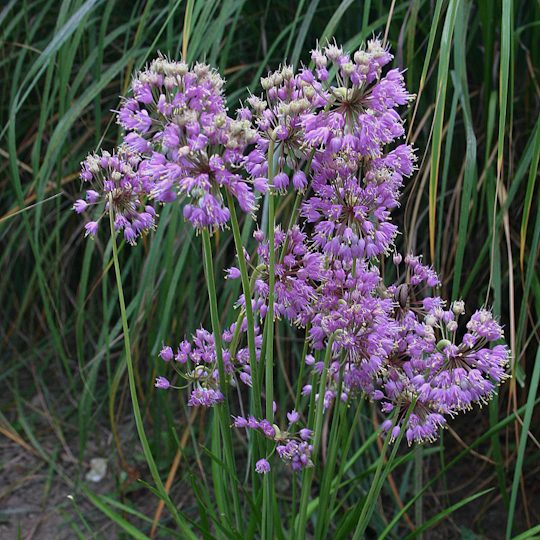
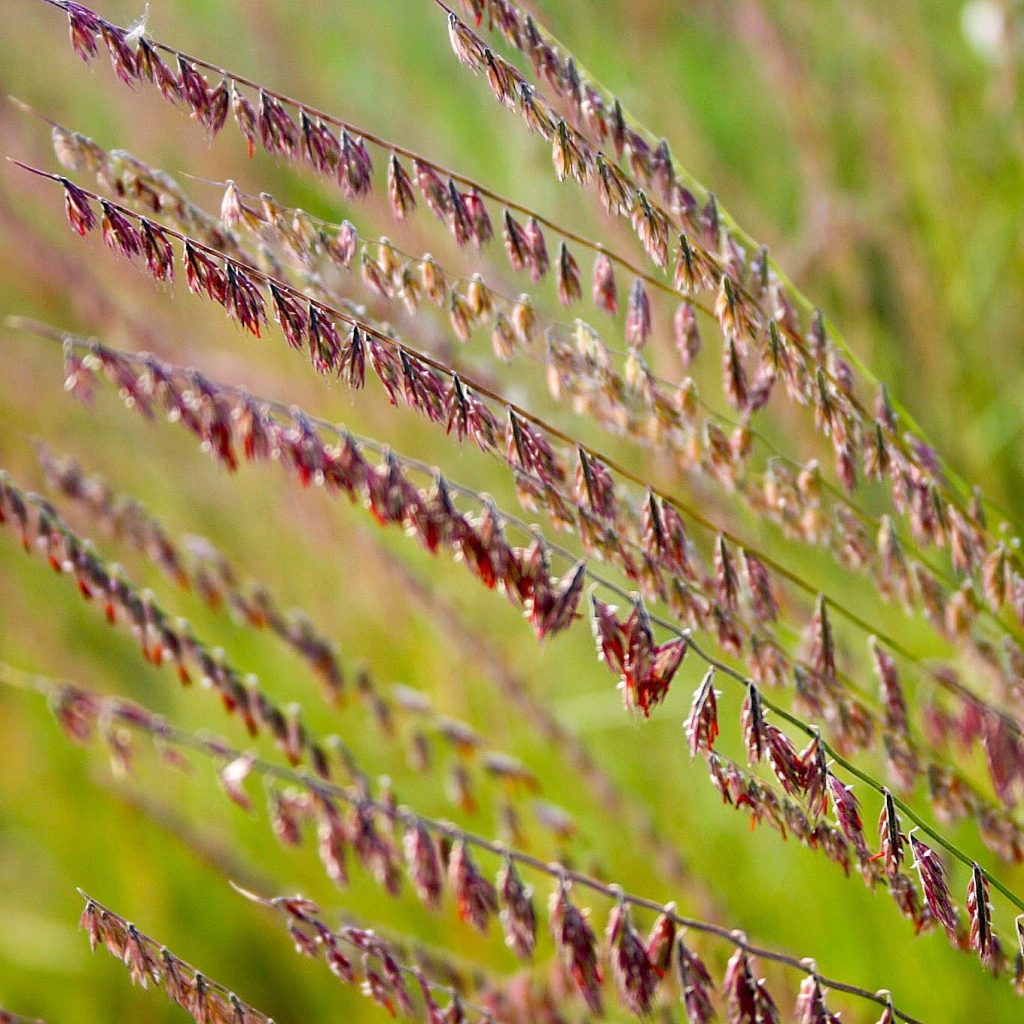
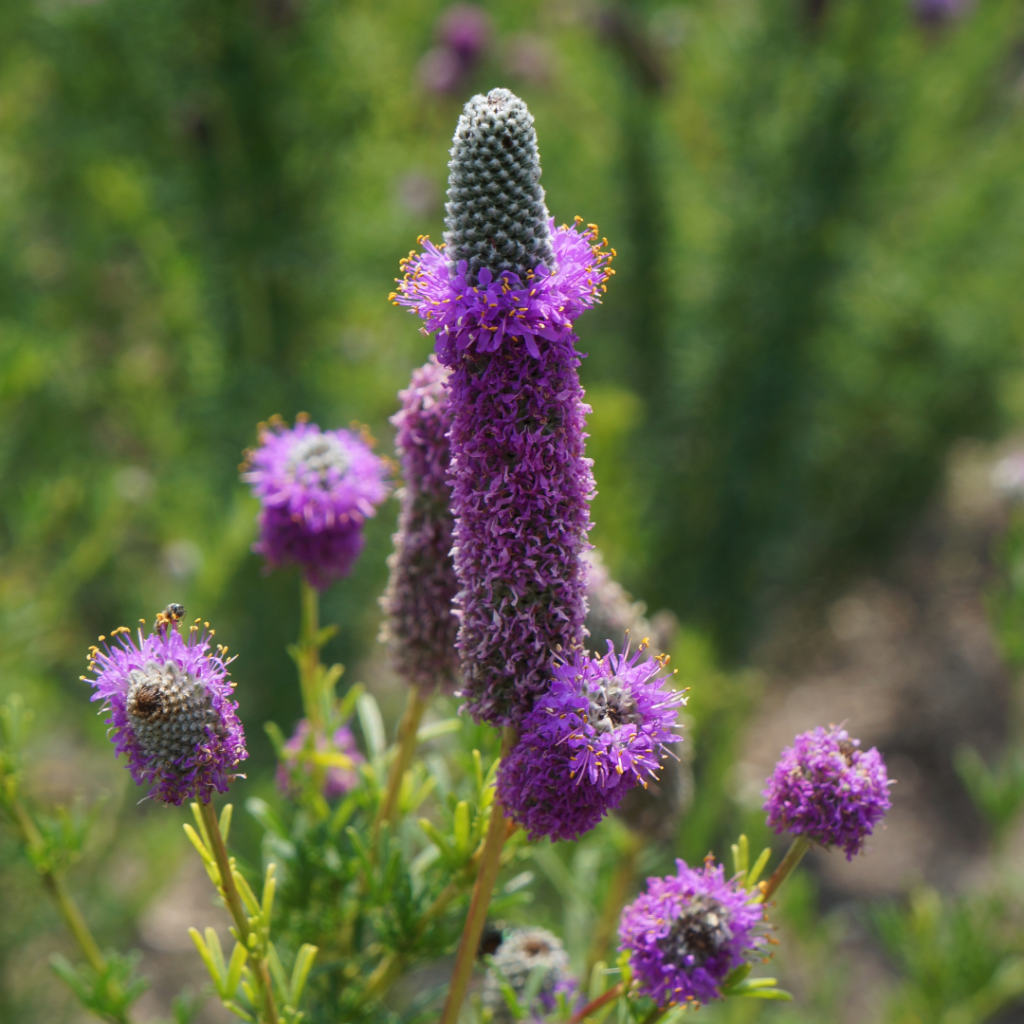
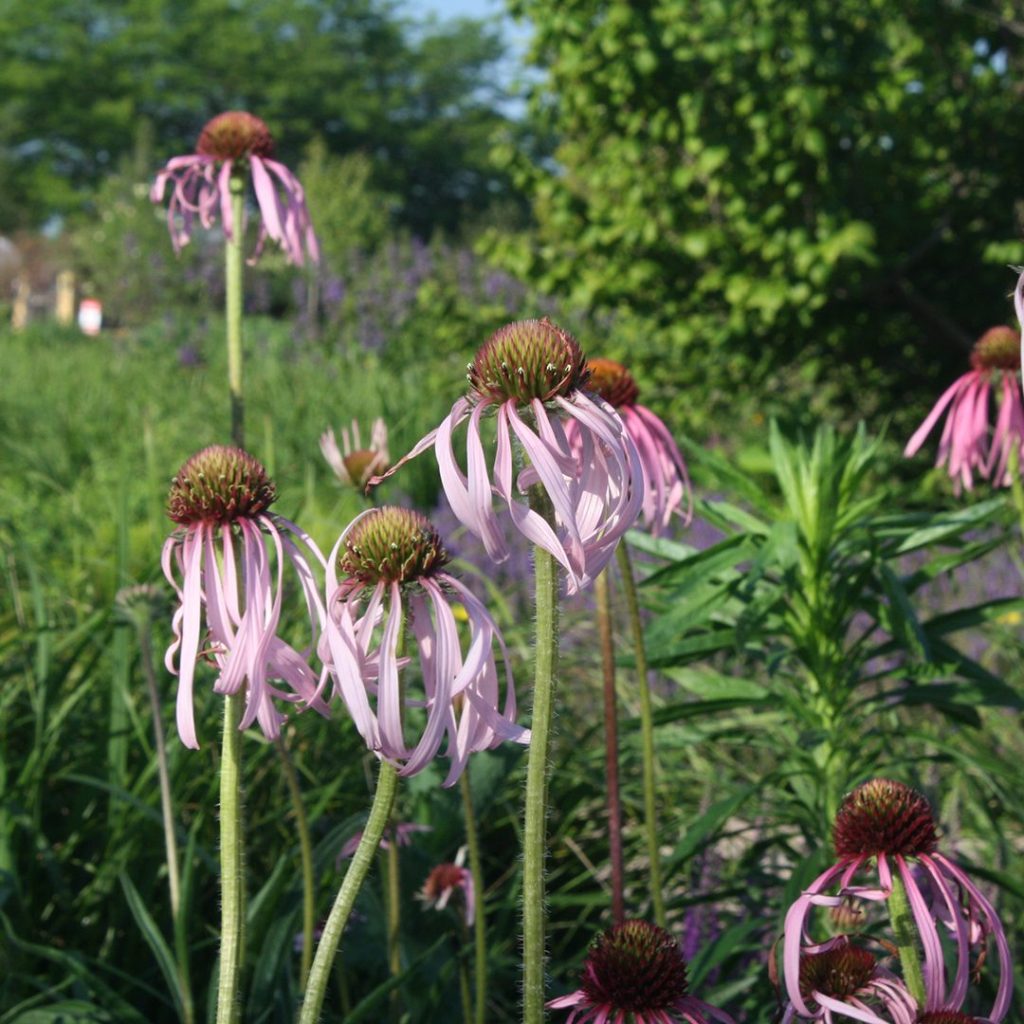
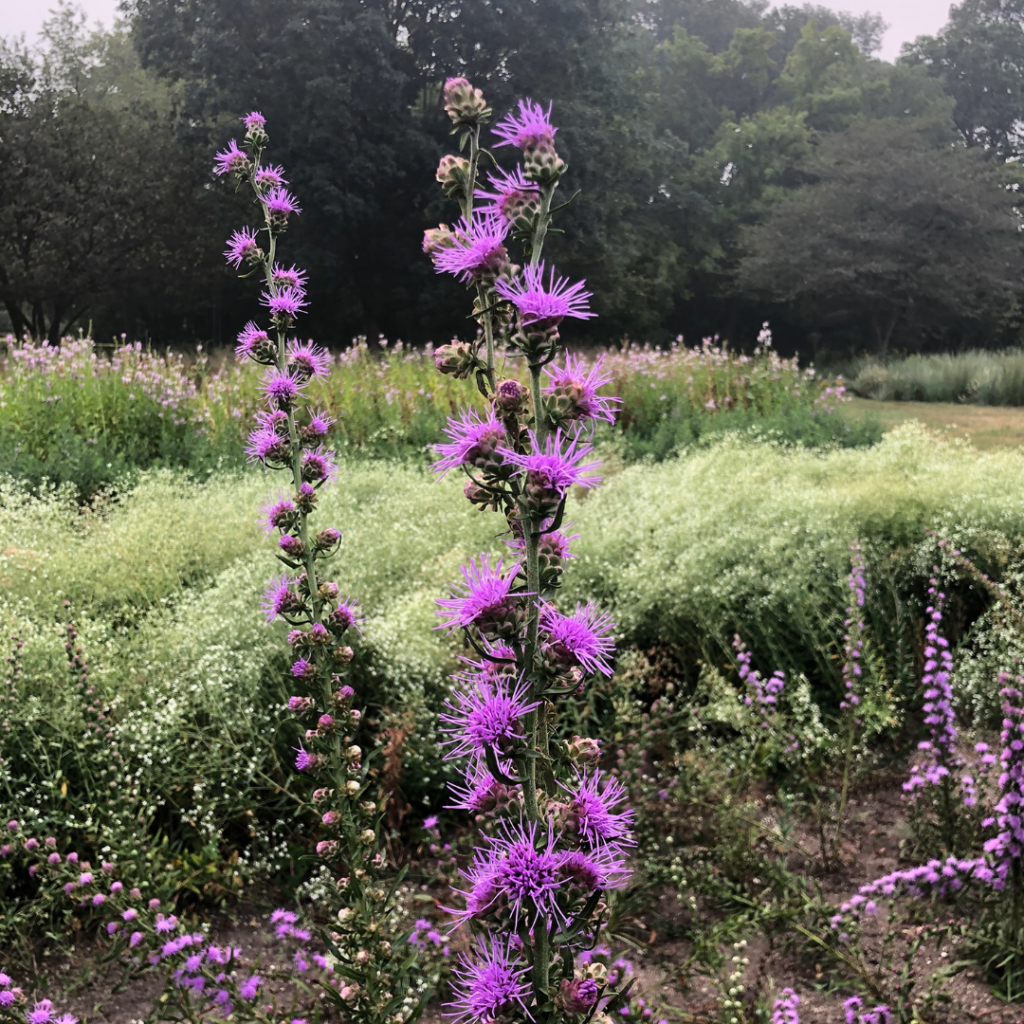
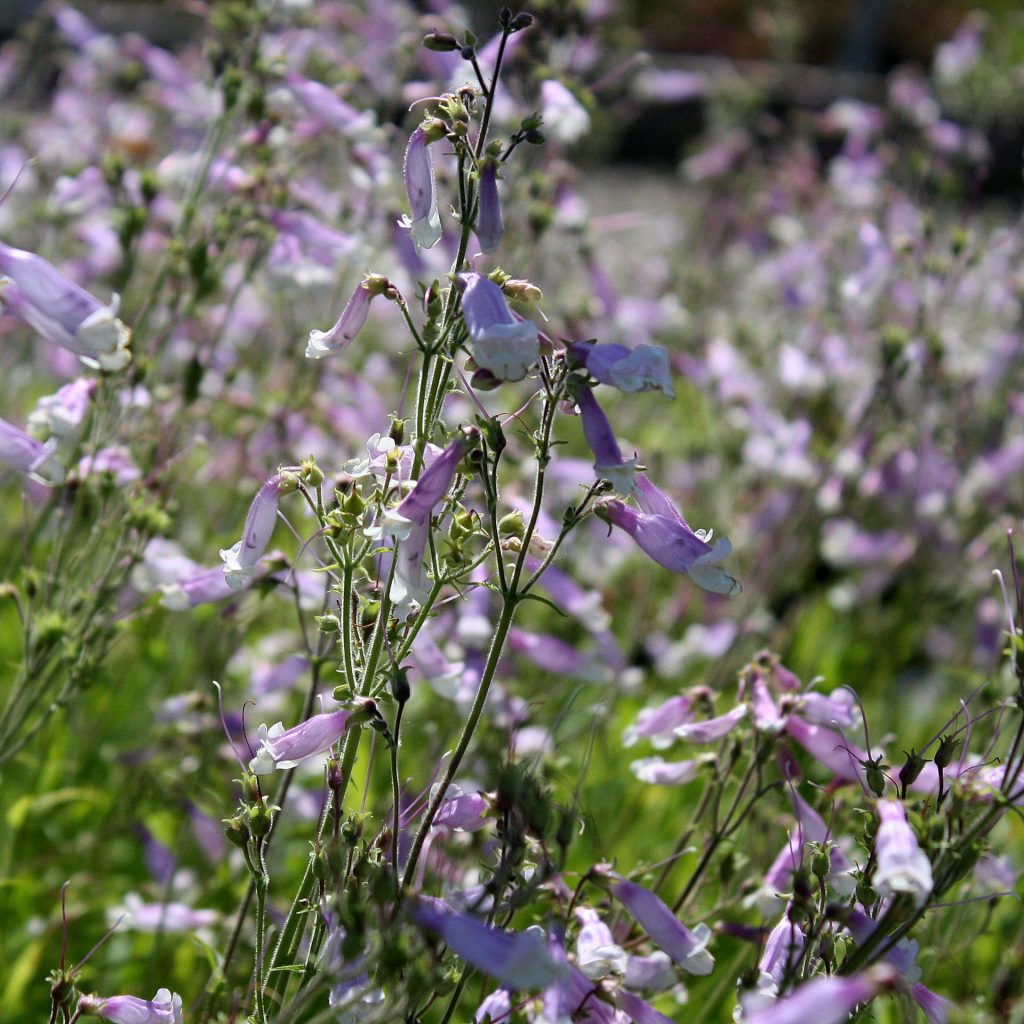
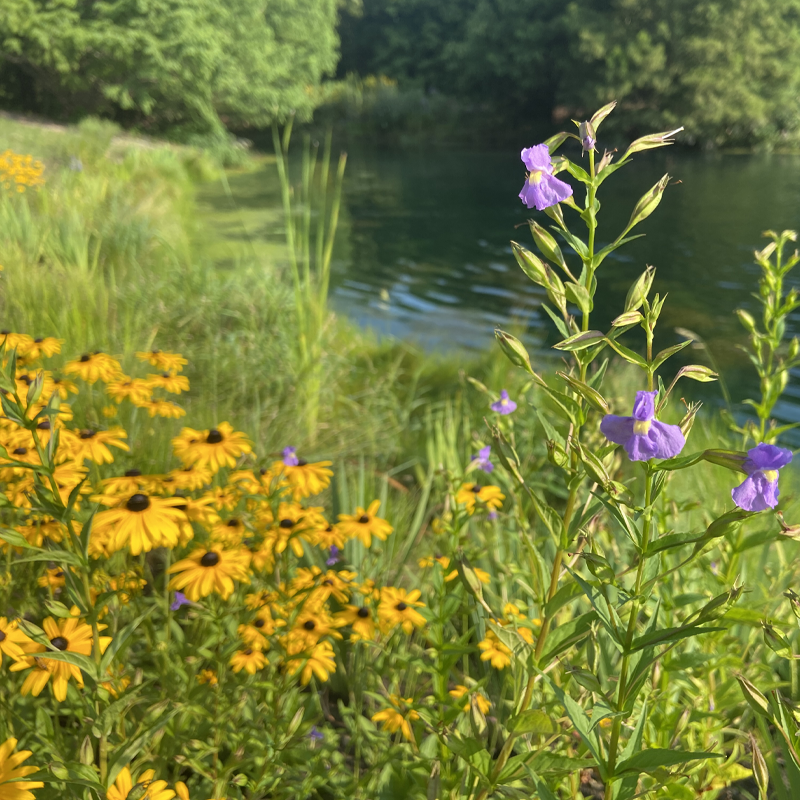
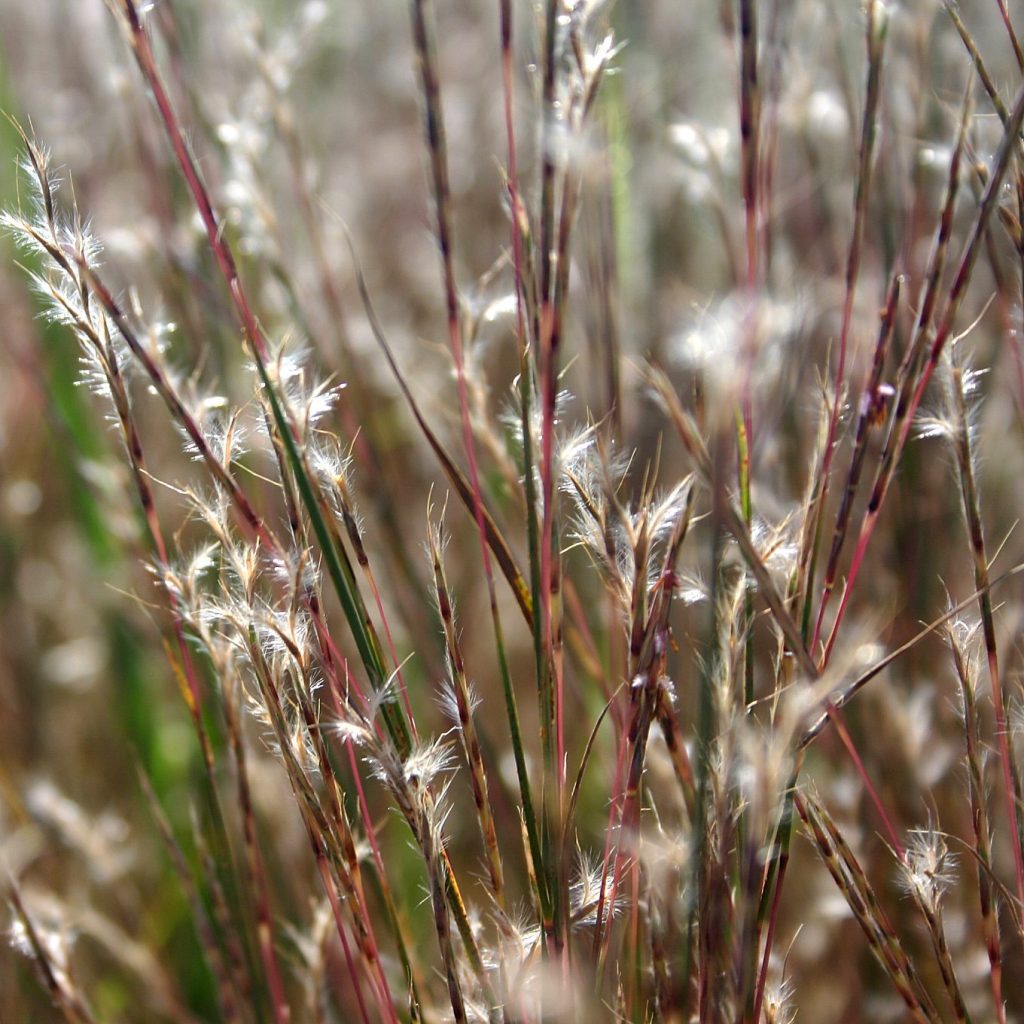
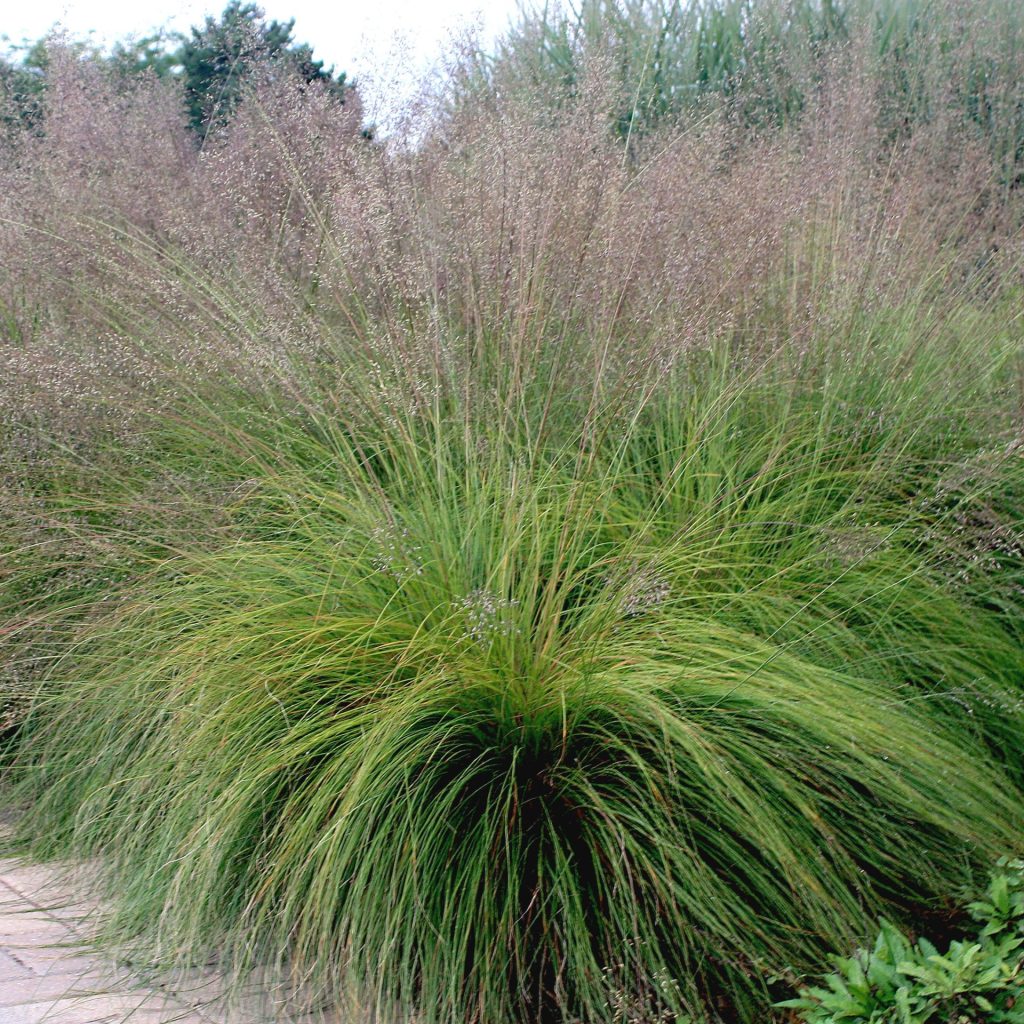
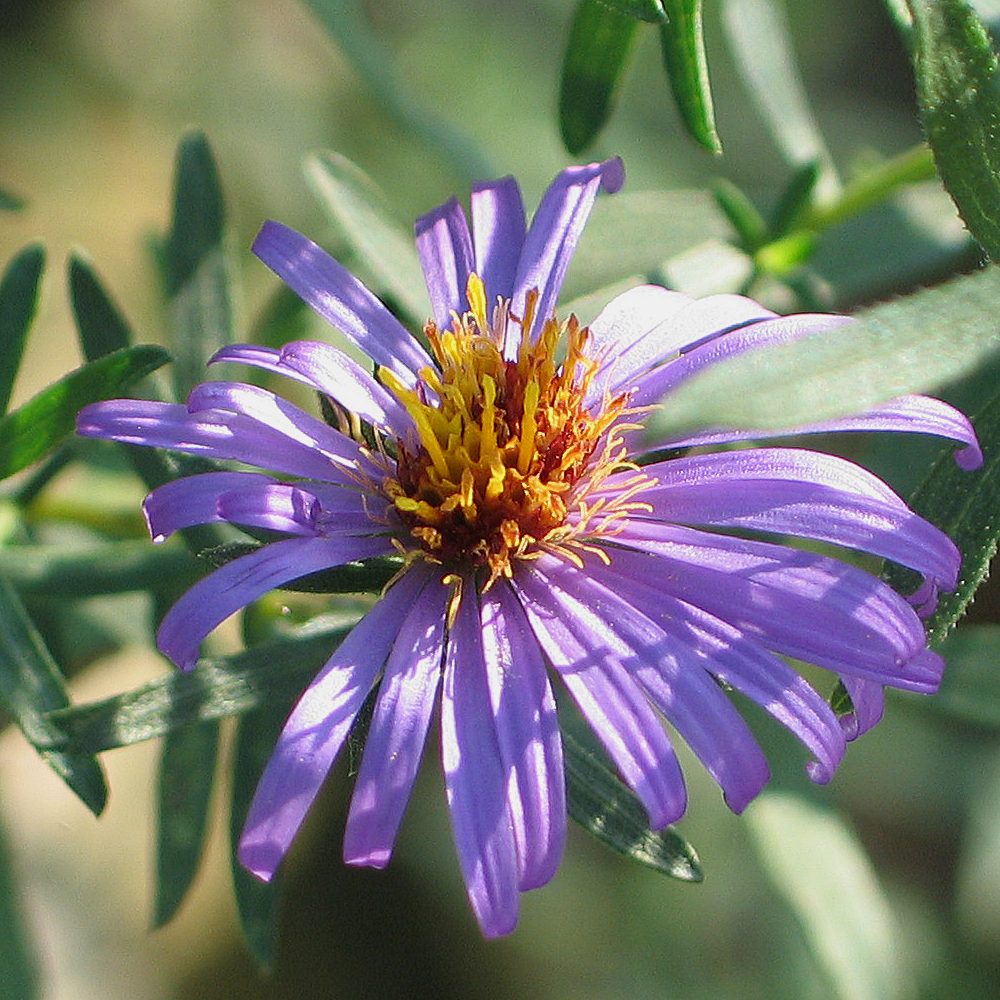
Remind new gardeners that gardening is a very slow-moving performance art! The long term performance is based on the actions of editing out and adding in over multiple seasons. Editing out is mostly what we refer to as weeds – which is simply the plants we don’t want present. Adding in, over time, is one of the great joys of gardening and builds desirable ecological diversity.
Once the foundational layer is established and any weed pressure is strongly suppressed, the fun can begin – and there are hundreds of wonderful native plants to consider adding at edges, as accents or sculptural features, or for specific purposes like pollinators, color or seasonal interest.
Start simple. Make the Native Meadow a success. Repeat!
Back To Blog
